My Camera Gear
Been using Canon Digital SLRs for a while now. As a Canon user, I have always been Nikon-envy for some reason. Maybe because I am just itchy to try more gadgets. But Canon Digital SLR cameras have been a very solid performer for us. So far, I have used 3 Canon Digital SLRs and the current model I use is the Rebel T1i/Kiss X3.

We both use the Rebel series. These are great little camera bodies as they are light, compact and feature rich. We never need to use the speed of continuous shooting so faster bodies do not make any difference to us. When we travel or visit events, the smaller body actually save our shoulders and helps us to be out and about longer without having to take breaks too often. My wife is still using the older Rebel XT/Kiss. Comparing her camera body to mine, hers is very dated. Almost time for a new body….
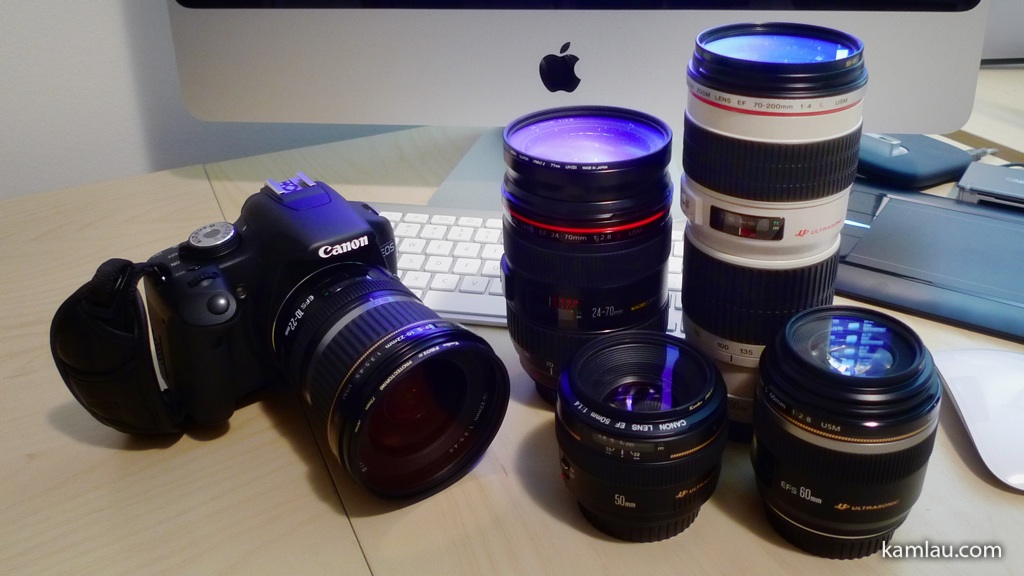
Between me and my wife, we share a few lenses.
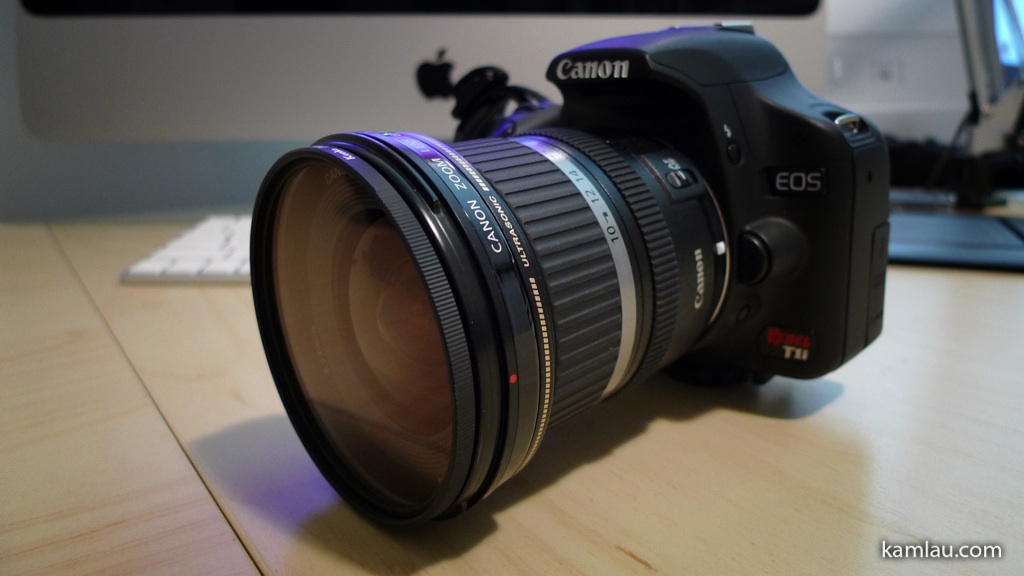
I think I use the wide angle lens the most as I like landscape and architecture photography (but actually I really need one of these). The EF-S 10-22mm lens is of very high quality. It is well built and is definitely one of my favourites. With the crop factor, it produces an effective 16mm equivalent in full frame format. It is a relatively inexpensive way to get the unique coverage if you don’t want to spend too much on a full frame body and an EF 16-35mm L. Of course, the EF-S 10-22mm is not the same quality as an EF 16-35mm L, but the cost saving is quite significant.

For landscape photography, like to use a circular polarizer to help cut down haze and increase contrast. It is not a cheap piece of glass but without it, you will also loose a lot of details.

The EF 50mm f1.4 is the fastest lens I have for the Canon cameras. It is light, relatively stubby and produces very nice background blur and bokeh. The depth of field can be very narrow and may be difficult to use at times. But it takes very clear and sharp pictures and it is my wife’s favourite.
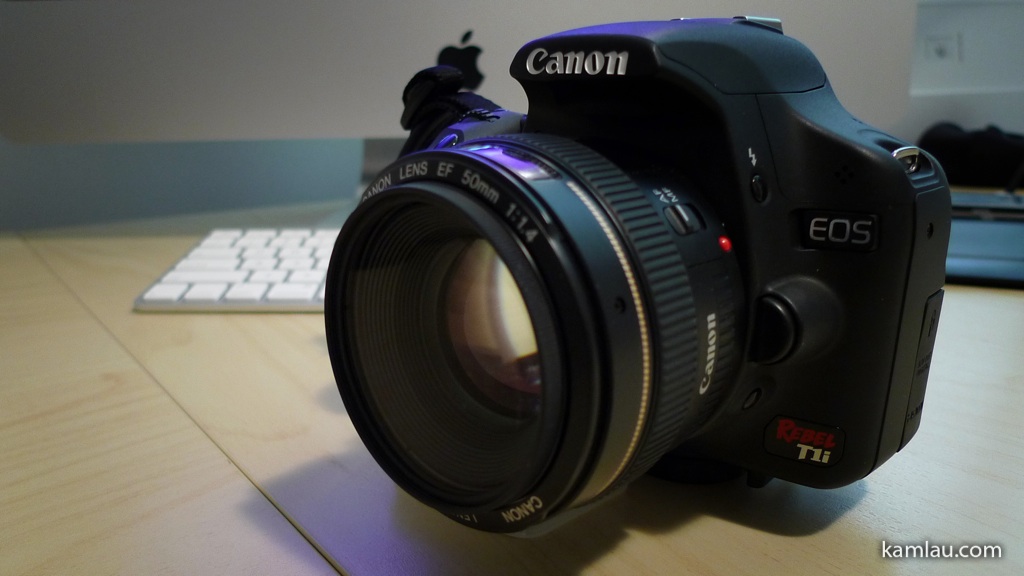
The focusing of this lens is pretty fast, as is the case with most other Ultrasonic lenses.
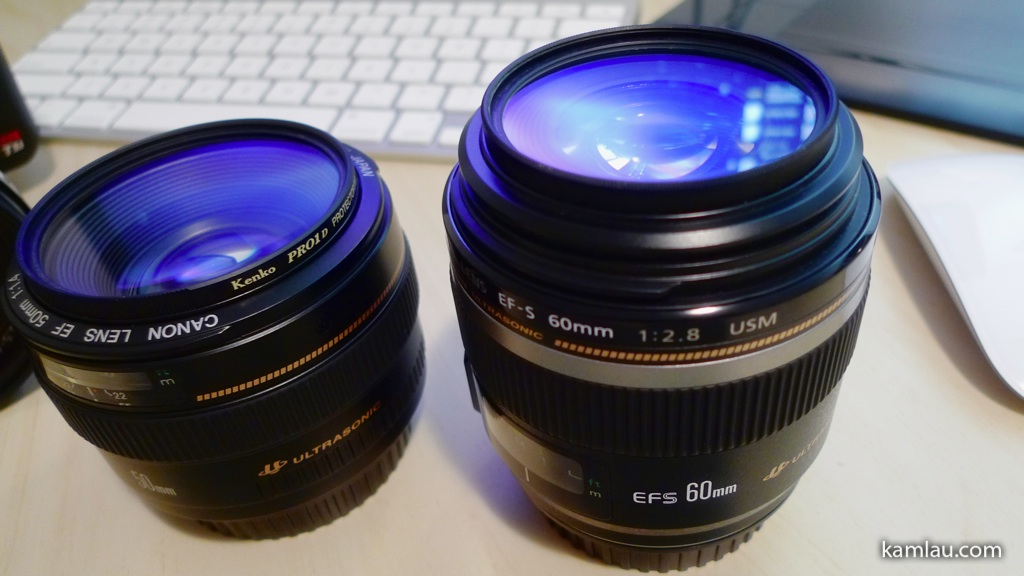
Another lens that we use a lot is the EF-S 60mm macro lens. Because it is an EF-S lens, the glass elements are a lot smaller when compared to the EF 50mm f1.4. It is very well built, very solid and produces very good macro photographs. Although, arguably the EF 100mm macro that costs slightly more may be a better choice if you like to have more diffused background blur. Better yet, get the new EF 100mm f2.8 L IS USM Macro if you can spare the change.
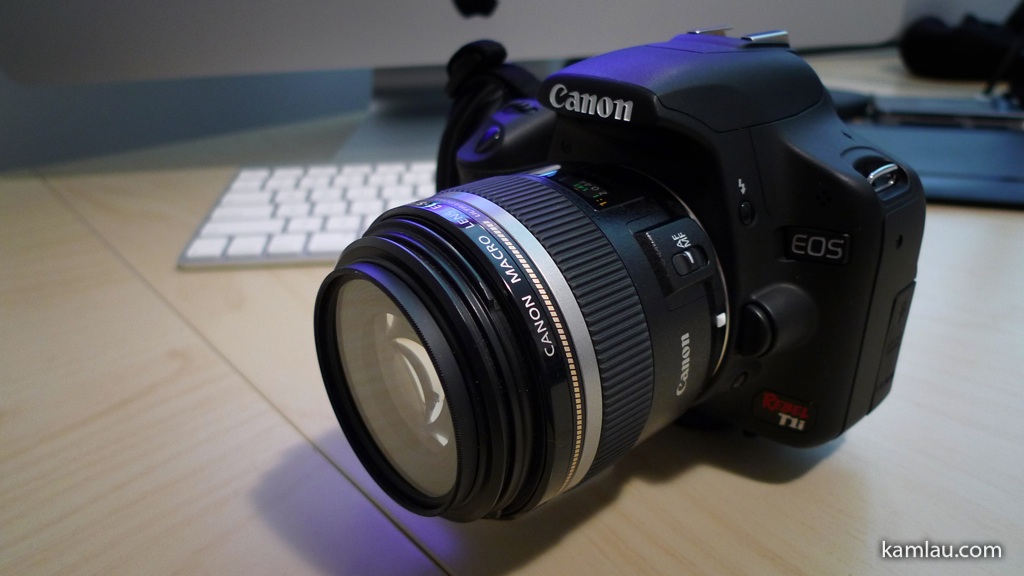
This lens can also be used as a portrait lens as the focal length is 96mm equivalent in full frame body format. One noteworthy point is this lens “hunts” a lot during focusing and may be a bit annoying if you need to take photos of a moving object (like children or animals).
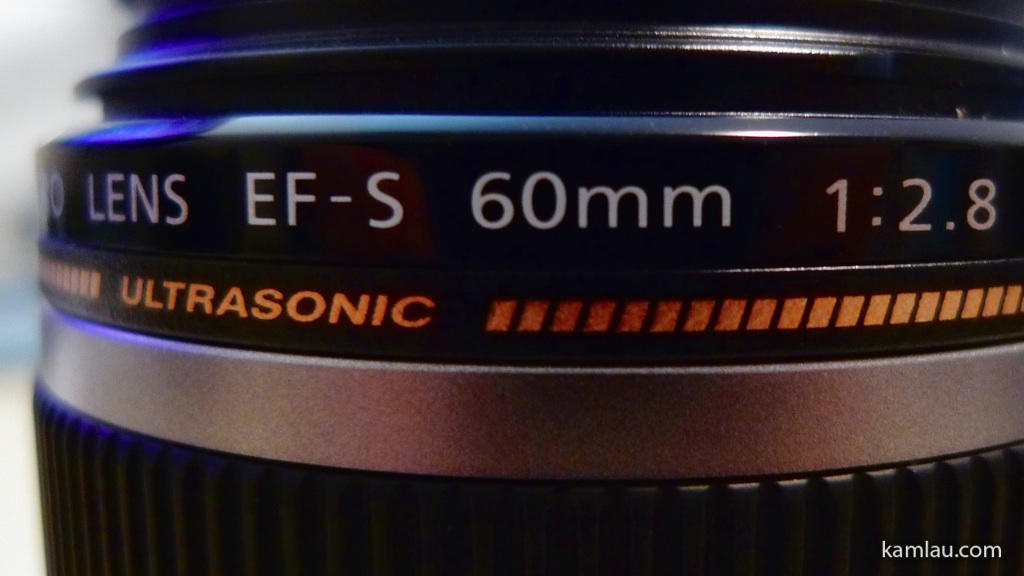
Luckily this lens is equipped with the Ultrasonic motor with Full-Time Manual Focusing. You can assist the focusing by rotating the focusing ring even when the lens is in AF mode.
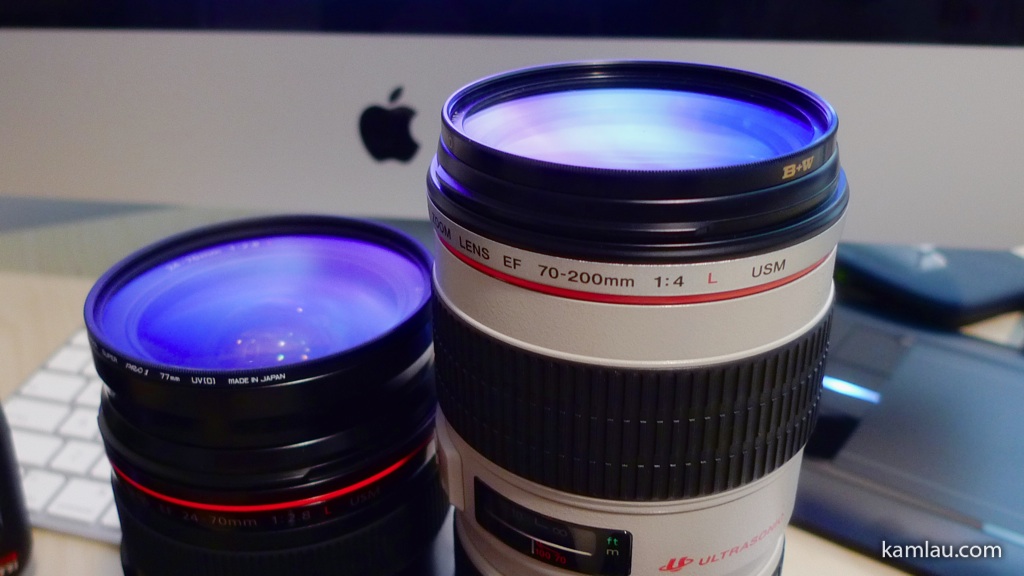
The other two lenses I use are the EF 70-200mm f4 L (poor man’s L series telephoto zoom) and the EF 24-70mm f2.8 L lens. They are both very nice lenses. I like the rich colour I can get from the EF 70-200mm f4 L. It is great for shooting wildlife and plants. It is great for outdoor photography where you have lots of light. Since it is only a f4, it might be a bit slow for indoor usage. If you are doing a lot of indoor shots, then the EF 70-200mm f2.8 L or the EF 70-200mm f2.8 IS L might be a better choice for you.
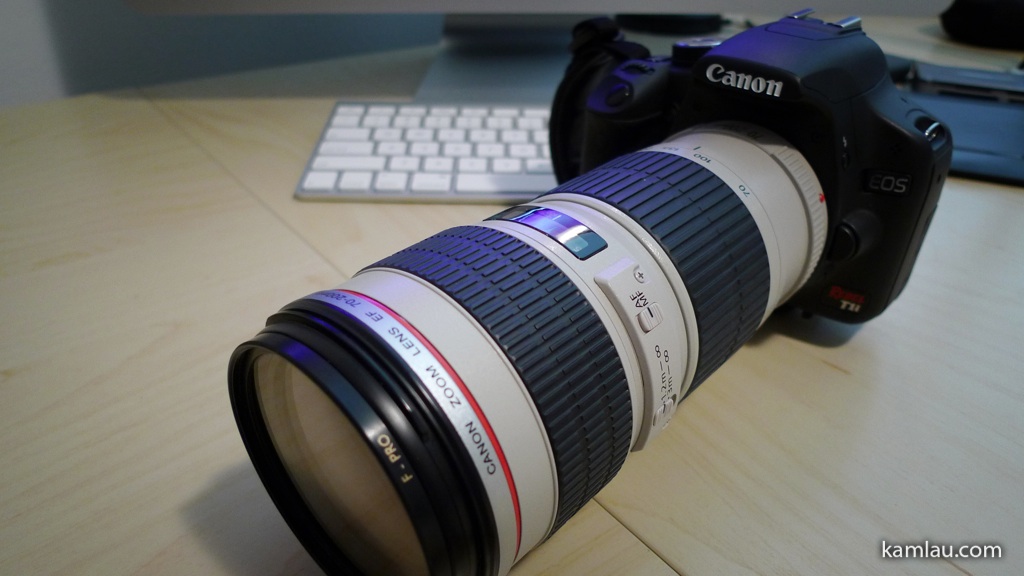
The EF 70-200mm f4 L is very light and the lens elements move internally during zooming. It is a joy to use.
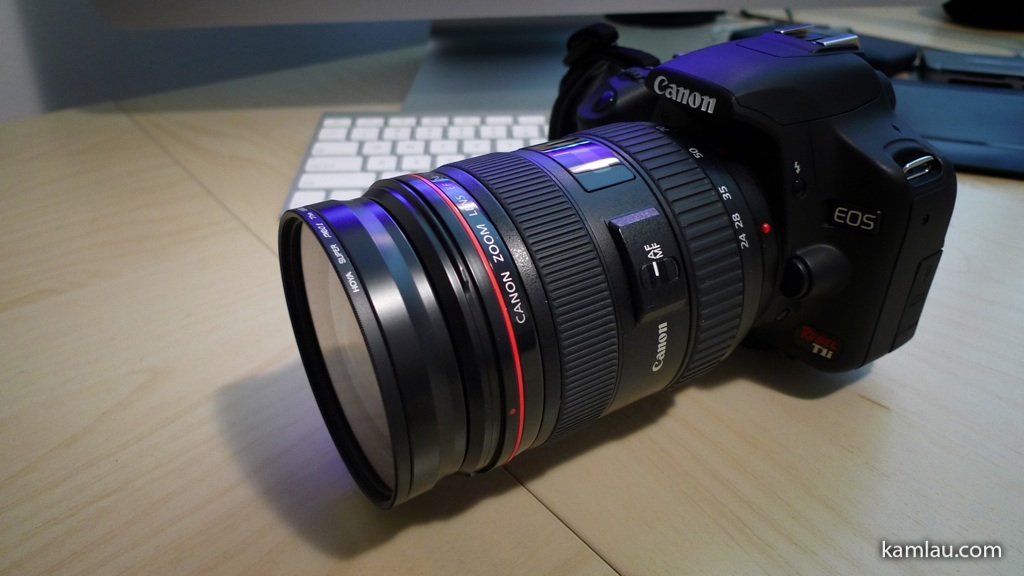
The 24-70mm f2.8 L is another great lens that produces very sharp images. It is also a very fast lens and is suitable for indoor and outdoor usage. It produces very nice background blur and bokeh as well. Personally, I find it a bit on the heavy side and when it zooms, the lens barrel extends. So that is not the best design. However, if you put on the lens hood (included), it will help you protect the front of the lens.
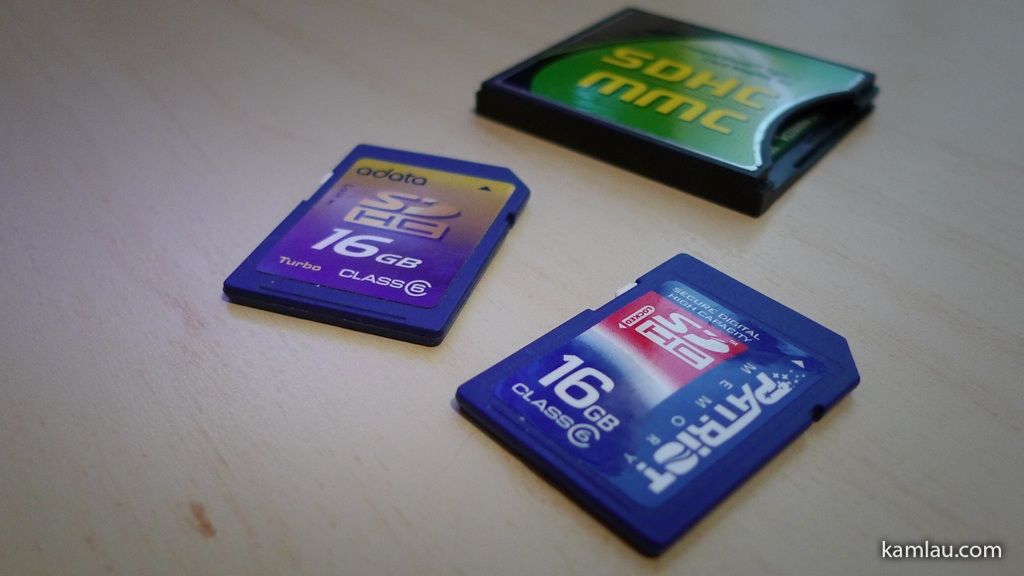
Memory cards are the additional accessories you have to get when you get into digital photography. I personally like to get as much storage capacity as I can that is economical. For example, the Patriot 16GB SDHC card costs around $40. It is a class 6 card and so far it handles everything I need. I have never gone out during a photo shoot and run out of memory space even if I shoot in RAW + JPG. (I rarely shoot videos.)
The other 16GB card is not very reliable and I don’t recommend it. It is adata and it was cheap; $30 for 16GB class 6 but I had one failed after using it for a couple months. Adata sent me a replacement but I found that I start to loose photos after using it for a couple of weeks. So I don’t think going too cheap with memory cards is a good idea.
The green card in the back is actually an SDHC/Compact Flash adaptor. I have an older card reader that can only read SD and Compact Flash. Instead of getting a new card reader, I decided to try this adaptor. It works very well and it lets me use the 16GB SDHC card in my wife’s older Rebel XT as well.
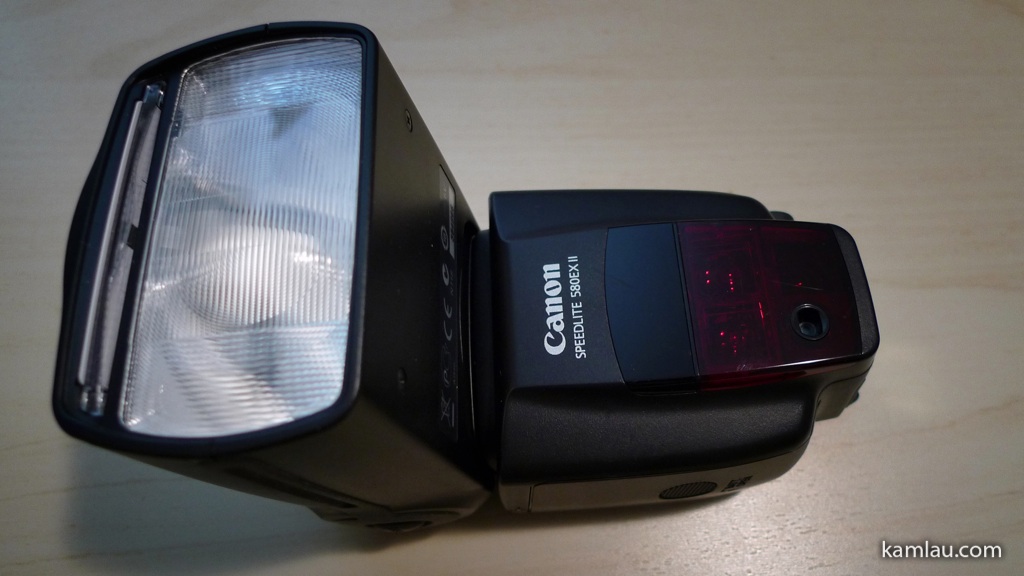
A flash is another essential accessory for photographers. The popup flashes on DSLRs are useless. They are too small and they produce a very harsh lighting effect. Also, you cannot change the flash direction of the popup flash easily without hacking some sort of reflector. I like a big and powerful flash like the Canon Speedlite 580EXII. Been using it for close to 2 years now and it produces very nice and even lighting for indoor photography. I highly recommend it.

Another accessory I have is a remote shutter. It is handy to have for long exposure shots. It is easier than using the self-timer function of the camera as you have a higher chance of getting the moment with a remote shutter. This is also a timer controller. You can configure the intervals and how many shots or how many minutes you like the camera to automatically take shots for you. It is an essential tool for time lapse photography.

Canon does not make timer controller for the Rebel series. Canon makes a timer controller, TC-80N3, for the other EOS cameras (like the 40D) but it has a different connector. Aputure takes the same controller, puts a connector that is compatible with the Rebel series and bring us the same remote controller functions. And it is only 1/3 the cost of the Canon TC-80NC.
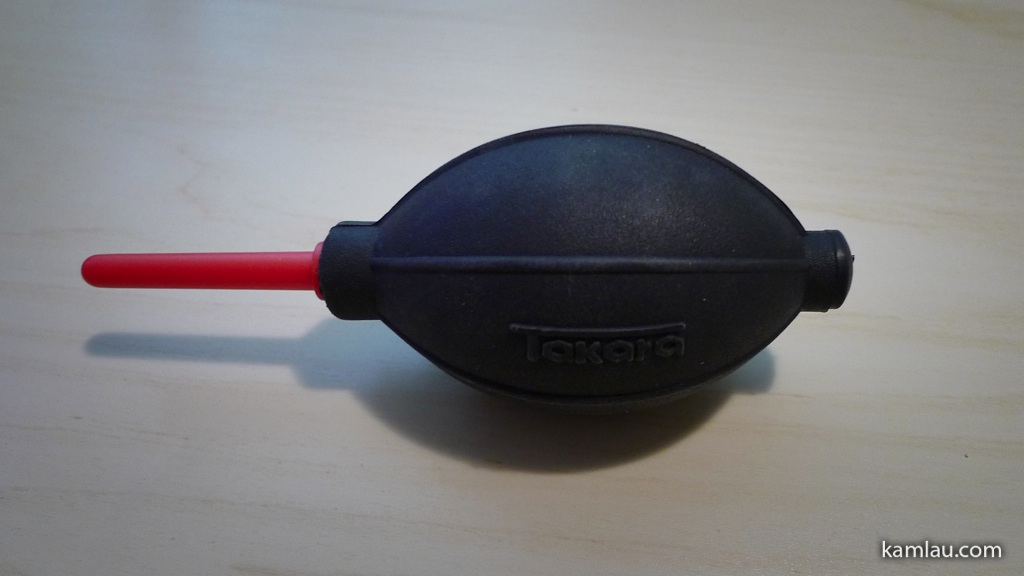
And for cleaning, I have the traditional air blower. Mine is just a generic blower and the valve does not work as well as I like. I often have to cover the hole opposite from the nozzle when I squeeze it to ensure all the air comes out from the nozzle.

In additional to the air blower, I have been using the lenspen. It is very convenient to use. One end has a retractable soft brush, the other end is a carbon-based cleaner that removes grease from your lens. I have never used it directly on the bare glass of the lens. I always have a filter on the lens so I only need to clean the filter. All the lenses in the photos above were cleaned with the lenspen.
I will have some macro shots to post next :)
Update: 2009/01/19 Macro Food Photos are up.
![[KL]-1 kamlau.com](http://kamlau.com/wp-content/uploads/2016/03/KL-1.png)
![[KL]-2](http://kamlau.com/wp-content/uploads/2016/03/KL-2.png)







wow wow wow!so cool! right now I only have kiss X2 with the two lenses. But next time I have the budget,I will look at this page again for references ^^
.-= nico´s last blog ..A very inspiring video of Will Smith€™s talks =-.
Thanks Nico, really like the news you posted on your blog. Please continue the great work!
Nice post man, this actually helps me a lot. Just bought a T1i to celebrate graduating from college/getting laid off right after I graduated and its been a lot of fun since. Right now I’m using the 18-55mm so I’m definitely looking to upgrade soon. I check your site almost every day and it’s always something interesting so keep it up!
Thanks Steve, glad to hear you like reading this blog. It is a personal outlet outside of work :P Yes, we used the kit lens for a while when we bought the XT but I definitely like trying out other lenses. Keep me posted of your photo adventures and camera gear comments!
woah! I see you have invested quite a bit in Canon. Probably not a good idea to switch to Nikon. ^^.
.-= ken´s last blog ..Yokohama #1 A day last spring =-.
It is difficult to think about anything else that can switch lenses :P But GF1 is pretty sweet ^^;
Kam, I need some advice. Whats a good every day lens worth buying for my T1i? I’m also getting into macro photography quite a bit if you could point me in the right direction for a lens there too. Thanks man
Hey Steve, by good everyday lens, do you mean a good walk-around lens? I agree with this article that there isn’t really a good all round lens that does everything. But if you really like a lens for general use and you are not too fuzzy about the image quality, a good range zoom lens like the Canon FE-S 18-200mm f3.5-5.6 IS or the new Sigma 18-250mm f3.5-6.3 DC OS HSM would be fine choices.
As for macro lens, you might want to consider the EF 100mm f2.8L IS USM Macro or the older EF 100mm f2.8 USM Macro.
HTH :)
Thanks Kam, I’ll take a look at your suggestions!